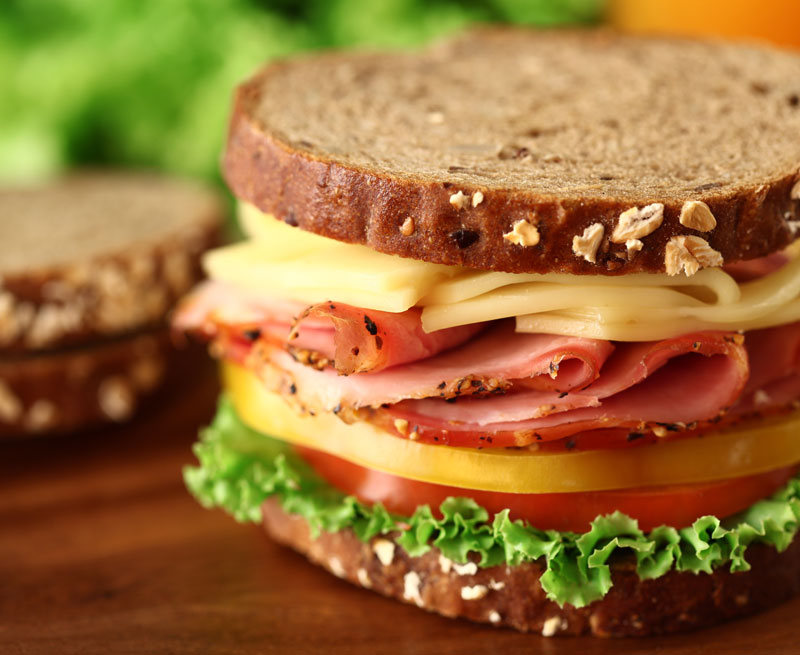Say this for modern quick-serve sandwiches: They’re certainly not standing still.
Thanks to some admirable creativity in the R&D kitchen and a hungry clientele that loves slightly skewed twists on a classic configuration, we now have varieties that are toasted, grilled, pressed, stuffed, multilayered, round, rectangular, oblong, and open-faced. We’re practically awash in variants built around everything from deli meats to grilled veggies, ground beef, and generous chunks of chicken and pork. And we have our pick of “sammies” served on carriers ranging from torpedo rolls to tortillas, ciabatta to steamed buns, and Jewish rye to Italian-style flatbreads. Footlong? Finger-sized? Five-inch? Family sized? Check, check, check, and check.
This, friends, simply isn’t a menu category that’s starved for innovation or reinvention.
And yet—and yet!—with sandwiches, it’s awfully hard to have too much of a good thing. Who knew how empty our lives could be without panini, banh mi, or tortas until one day, there they were, making their way around U.S. roadways on food trucks, or being served from street carts in major metropolitan areas and tourist havens around the country. For a mealtime staple that’s as much a part of our daily routines as coffee and crosstown traffic, sandwiches have shown themselves to be surprisingly resilient and resistant to ruts.
So what might be next?
Belly up to the bar
Sure, there are plenty of chains that now allow you to sidle up to the counter and direct the restaurant staff to build a sandwich using your choice of ingredients. The practice is so common nowadays that we forget how much more gratifying it can be to get our own hands in the mix. We’ve had salad bars for decades now; isn’t it time someone threw the doors open wide and invited patrons to build their own sandwiches from scads of meats, cheeses, veggies, condiments, and carriers?
No question, the operational complexity of a sandwich bar could take time to master, and the pay-by-weight system would offer its share of challenges, but sandwich preferences being as deeply entrenched and highly personal as they are, my guess is that guests would quickly warm to the option and repay the newfound freedom in loyalty. Admit it: It’s aggravating when you have to keep asking the fellow on the other side of the counter to keep adding more onions or peppers to your sub, to go a little heavier on the oil and vinegar, or to really ladle on the Dijon mustard. Putting the guests squarely in the driver’s seat would ensure they get their way, every time.
Keep the carriers coming
As previously noted, our sandwich-crazed culture is not short on carrier options. If you’re hankering for a tuna melt on a toasted Asiago-jalapeño bagel, a roast-beef club on sourdough, a caprese sandwich on scala bread, or a roast pork–stuffed bao bun, you won’t go wanting. But nothing transforms a sandwich as quickly and thoroughly as a brand new carrier, so let’s keep the good ideas coming.
A casual survey of carriers in use at various concepts witnessed such unlikely candidates as sushi rice, tofu buns, danishes, pretzel buns flavored with different types of beer, corn patties, doughnuts, griddled plantains, and even brioche (though the latter was filled with ice cream, it’s not hard to imagine a delicious line of brioche-based breakfast sandwiches coming into vogue).
Deconstruct to reconstruct
The most radical reconfiguring of a sandwich, and the one with mostly untapped potential in the quick-serve world, involves disassembly, otherwise known among technical experts as “de-sandwichizing,” or “entréefication.” And it’s a more powerful weapon in the menu-development arsenal than you might imagine.
I have experienced a dismantled version of a hot pastrami sandwich that was plated with melted Swiss cheese béchamel sauce, caramelized onions, and pickles, all piled on a plate of french fries. And I can attest that it was truly something special. On a recent food trend tour CCD Innovation conducted in Portland, Oregon, for a quick-service chain, we encountered an exquisite pork meatball sub in a cilantro-heavy sauce. Trust me when I say it was no less astounding for its breadlessness.
Club sandwiches and BLTs that have been fractured into their constituent parts and loaded atop fries, a baked potato, a specially crafted waffle, or other carrier have equally great potential. A good rule of thumb to follow is that if it works within the bun, it can be reimagined as a plated entrée with just a little creativity and a few thoughtful flourishes.
What creative sandwich ideas have you or your team come up with recently? What novel notions have you encountered as you taste around town? E-mail me some of your most interesting findings and I’ll talk about some of them in a future column.












